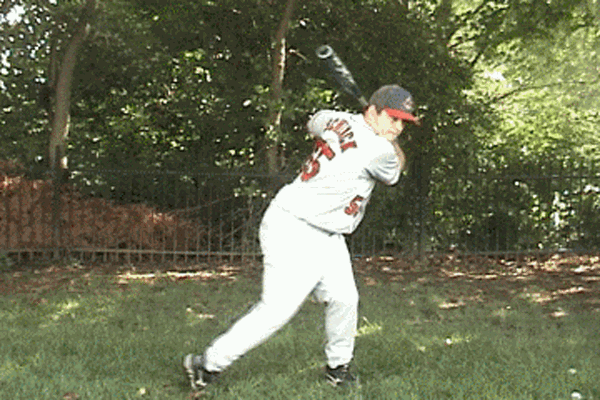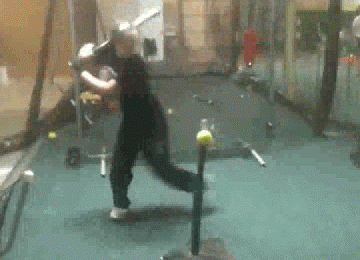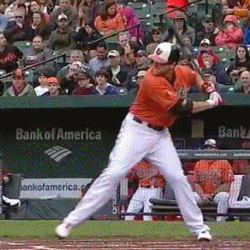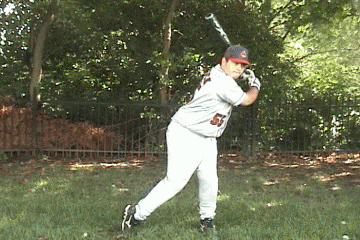I would say this clip is very relevant for the debate as we are arguing both sides right now. You see front leg action (2 legs), and I don't (1 leg). If you teach me to see the front leg action in this clip, maybe I start to see it in pro swings. If I convince others conversely, maybe they start to see that most post-stride front leg movements are just the result of rear side action.

This clip is launch and the hands aren't moving back. They are turning. I do not see any slop here. His barrel turn is instantly echoed throughout his entire body. This clip is the gold standard for no-slop.
I am not capable of breaking into a legitimate anatomical analysis, but I'll try. By stretch across the pelvis I assume you are referring to front side clearing which is usually accomplished by a front side ER movement. I just don't see any signs of front leg ER in this clip (as indicated by his front foot). I don't see stretch across the pelvis, I see his pelvis being turned by the backside which I guess would be a compressive force pushing across his pelvis out to his front hip. His front hip is pulling his front leg out of the way, but only because it is being pushed radially around a rear leg axis.
This is exactly what separates the movement patterns.. One is a linear push from the rear side to the front side, while the other is middle out with both legs supporting the core actions..
The push across is also responsible for hitters lunging when fooled.
Last edited:







